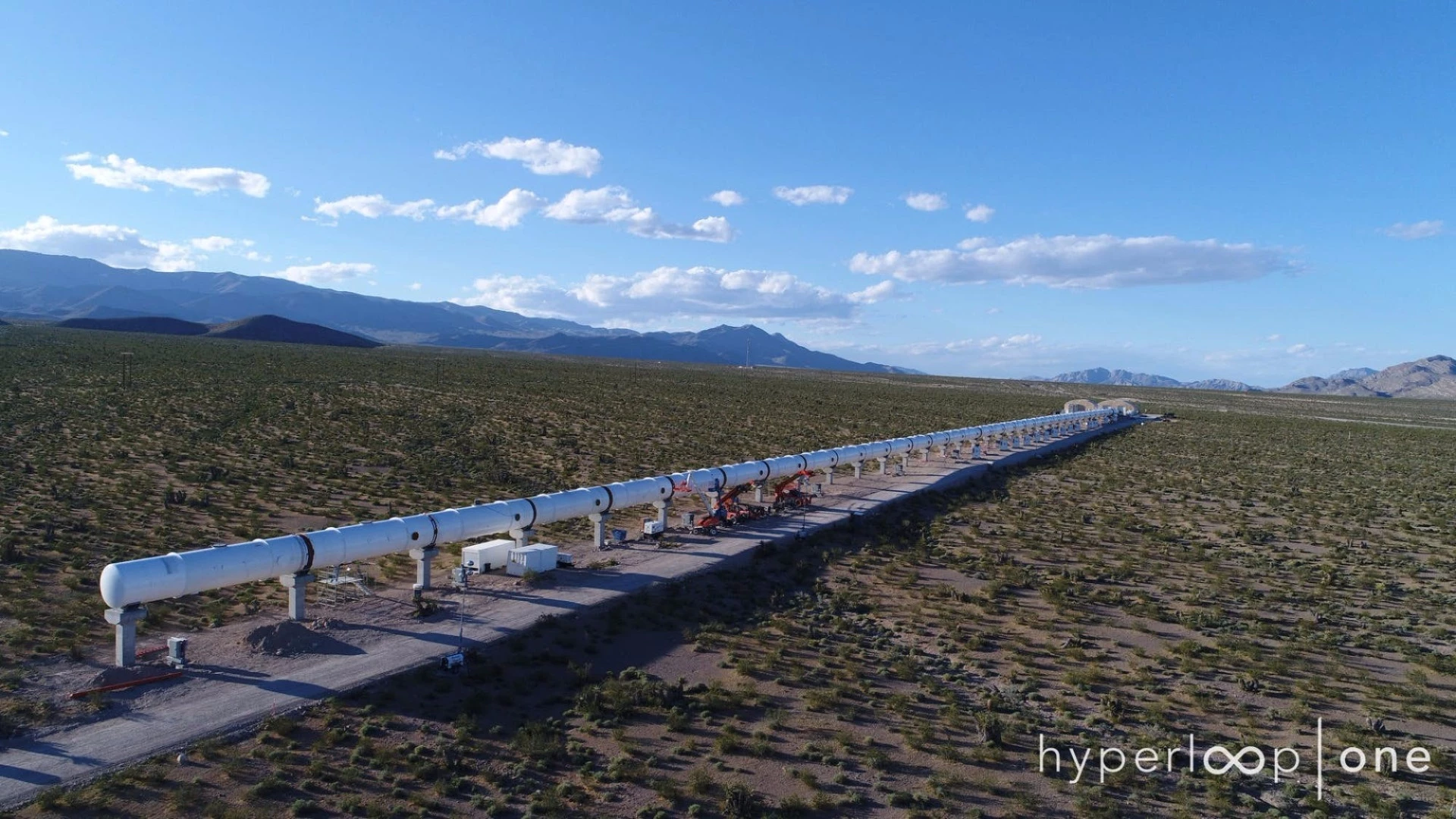A few weeks back, Hyperloop One revealed a prototype of a pod that it hopes will eventually ferry passengers through near-vacuum tubes at around the speed of sound. Today, the company has announced the first successful tests of this futuristic capsule, in which it levitated above a test track en route to speeds of more than 300 km/h.
Hyperloop One is one of a growing contingent of startups vying to make Elon Musk's tube-based transport concept a reality, with Hyperloop Transportation Technologies and Arrivo among its competitors. Such a system would see networks of low-pressure tubes shuttle people and cargo around in magnetically levitated pods at around 1,200 km/h, traveling from LA to San Francisco in just 30 minutes.
Today's announcement follows what the company called Phase 1 trials last month, where it tested all of its system components for the first time on a specially built sled. This included things like the motor, vehicle suspension, magnetic levitation technology and vacuum pumping system. The reveal of its prototype pod, the XP-1, accompanied that announcement.
The pod is 8.7 m long, 2.7 m wide and 2.4 m tall (28.5 x 8.9 x 7.9 ft), and features a shell made from carbon fiber panels. The chassis is made from structural aluminum and contains the propulsion system and magnets for levitation and guidance. Hyperloop One says it is designed like a Formula One car – to be lightweight but strong.

And now Phase 2 of testing has seen the XP-1 put through its paces at Hyperloop One's 500-meter (1,600 ft) tube in the Nevada desert. This involved depressurizing the tube to the equivalent of the air at around 200,000 feet (60 km) above sea level, allowing the pod to use magnetic levitation to float above the track and accelerate via electric propulsion over a distance of 300 m (1,000 ft).
"We've reached historic speeds of 310 km (192 miles) an hour, and we're excited to finally show the world the XP-1 going into the Hyperloop One tube," said Shervin Pishevar, co-founder of Hyperloop One. "When you hear the sound of the Hyperloop One, you hear the sound of the future."
The team reports that again, all components of the system aced the testing, such as the electric motor, controls and electronics, custom magnetic levitation and guidance, pod suspension and vacuum system. While it's still a far cry from the slated speeds of a real-world Hyperloop, it is another promising step forward for a company who is already conducting feasibility studies in various countries around the world.
"We've proven that our technology works, and we're now ready to enter into discussions with partners, customers and governments around the world about the full commercialization of our Hyperloop technology," said Hyperloop One CEO Rob Lloyd. "We're excited about the prospects and the reception we've received from governments around the world to help solve their mass transportation and infrastructure challenges."
You can check out the XP-1 pod in action in the video below.
Source: Hyperloop One










